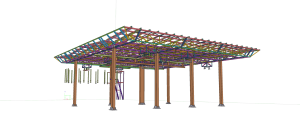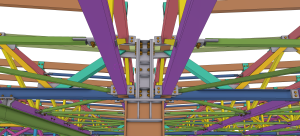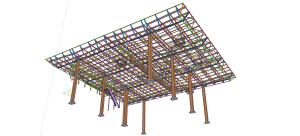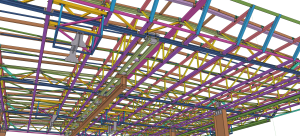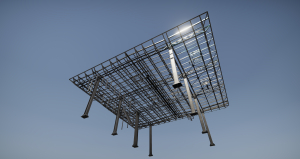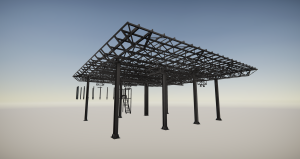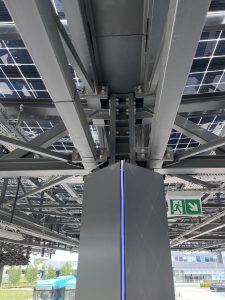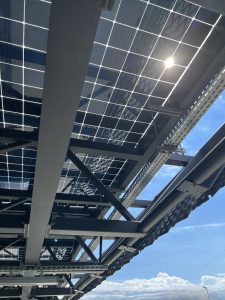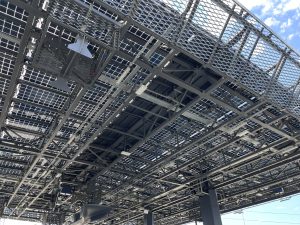Stacja ładowania
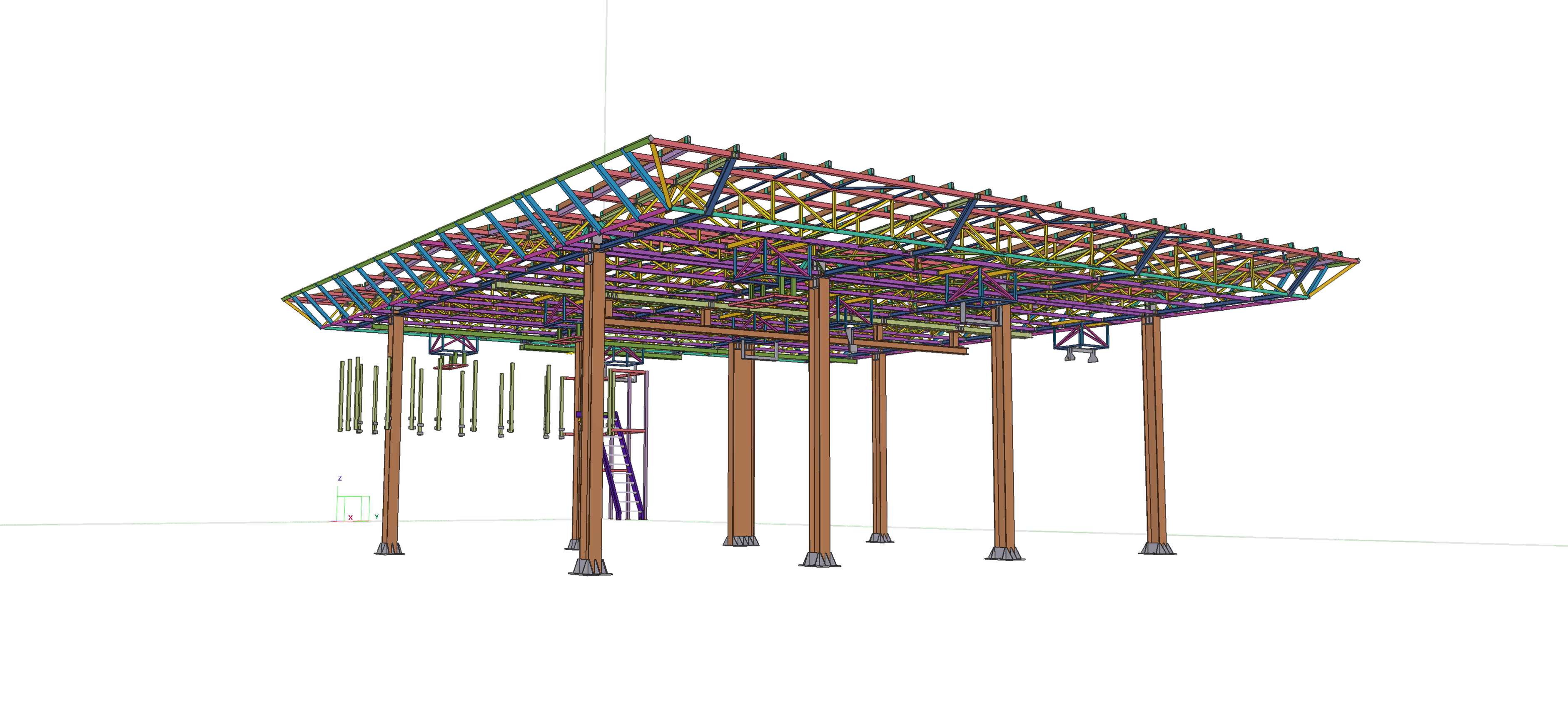
| Category | Small Scale Projects |
|---|---|
| Year | 2023 |
| Country | Poland |
| Organization | Element2 sp. z o.o. |
| Author | Bartosz Czapiewski |
| Co-authors | Krzysztof Talarek Maciej Przybylski |
| Place of construction | Bolechowo |
| Tags |
Zaprojektowano konstrukcję stalową stacji ładowania autobusów elektrycznych w postaci wiaty z czterema stanowiskami umożliwiającą ładowanie pantografami. Zaproponowane mocowania interfejsów do ładowania umożliwiają swobodny montaż różnych typów ładowarek. Dodatkowo zainstalowano ładowarki typu plug-in, a stacja umożliwia dwukierunkowy przepływ energii. Dzięki technologii V2G, autobusy mogą pełnić rolę mobilnych magazynów energii oraz być rozładowywane na miejscu. Cała stacja zajmuje obszar o powierzchni 5000 m2.
Projekt ten jest jednym z najnowocześniejszych w Europie oraz pierwszym tego typu w Polsce, doskonale wpisując się w trend wprowadzania pojazdów zeroemisyjnych do miast. Obecnie zaimplementowane rozwiązania umożliwiają ładowanie aż trzech pojazdów jednocześnie na jednym stanowisku, mocą od 150 kW do 600 kW. Na dachu stacji zainstalowano panele fotowoltaiczne, które pokrywają lokalne zapotrzebowanie na energię. Cały system jest zarządzany centralnie i umożliwia zdalne sterowanie procesem ładowania.
Stacja pełni również funkcję pokazową i reprezentacyjną, gdzie odbywają się testy i pokazy nowych technologii oraz sprawdzane są funkcjonalności wprowadzanych rozwiązań.
Konstrukcja wiaty składa się z czterech ram w rozstawie 6,12 m i rozpiętości środkowego przęsła 12,8 m, posadowionych na żelbetowych stopach fundamentowych. Główne dźwigary kratowe są trójprzęsłowe. Skrajne przęsła wykonstruowane są jako wsporniki. Między dźwigarami głównymi zastosowano kratowe płatwie stalowe, których lokalizacja skoordynowana jest z systemowymi belkami wsporczymi paneli fotowoltaicznych. Płatwie zostały zaprojektowane dodatkowo na możliwość podwieszenia elementów ładujących o ciężarze nie przekraczającym 200kg. Wysokość konstrukcji w świetle wynosi 6,0 m, najwyższy punkt dachu znajduje się na wysokości 7,1 m.
The project shows a steel structure of charging station for electric buses in form of the carport with four charging spots enabling charging with a pantograph. Designed fixings of charging interfaces allows flexible arrangement of various types of chargers. In addition plug-in chargers have been installed, and the station enables bidirectional energy flow. The V2G technology allows buses to serve as mobile energy storage units and to be discharged on-site. The entire station occupies an area of 5000 square meters.
This project is one of the most advanced in Europe and the first of its kind in Poland, perfectly aligning with the trend of introducing zero-emission vehicles into cities. Currently implemented solutions allow for simultaneous charging of up to three vehicles at a single spot, with power ranging from 150 kW to 600 kW. Solar panels have been installed on the station’s roof to cover local energy demand. The entire system is centrally managed and enables remote control of the charging process.
The station also serves as a showcase and demonstration facility, where tests and presentations of new technologies take place, and the functionality of implemented solutions is verified.
The carport structure consists of four frames spaced 6.12 meters apart with central span ranged 12.8 meters, supported by reinforced concrete spot footings. The main lattice girders are three-spans long. The outer spans are designed as cantilevers. Steel lattice beams are placed between the main trusses. They are coordinated with the supporting beams of the photovoltaic panels. These supporting beams have also been designed to bear charging elements weighing up to 200 kg. The interior height of the structure is 6.0 meters, with the highest point of the roof reaching 7.1 meters.
